Montenegro Flag Meaning
A red field with golden border and the coat of arms featuring a golden double-headed eagle, representing Montenegro's medieval heritage, Orthodox Christian identity, and recent independence from Serbia.
- Continent
- Europe
- Adopted
- 2004
- Ratio
- 1:2
- Colors
- red, gold
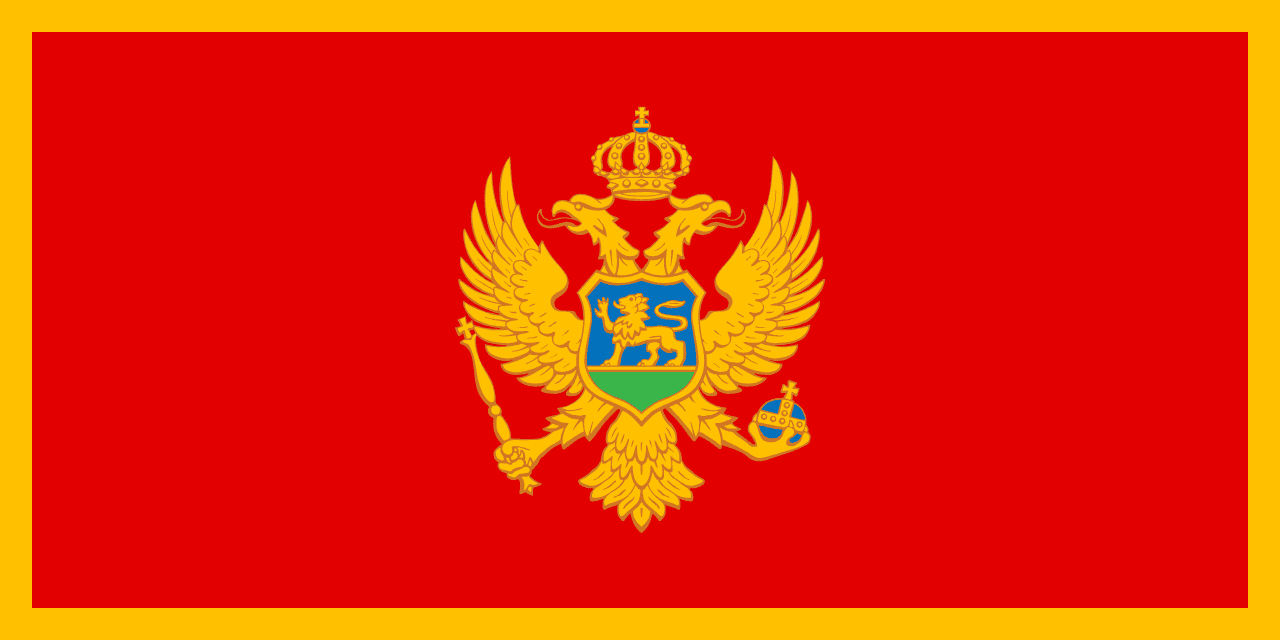
Symbolism
Red Field: Represents the blood shed by Montenegrin warriors defending their homeland throughout history, particularly during the centuries-long resistance against Ottoman rule and the fight for independence.
Golden Border: Symbolizes justice, mercy, and nobility, while also representing the golden mountains and sunset light that illuminates Montenegro's dramatic mountainous landscape.
Double-Headed Eagle: Represents the unity of church and state in Orthodox tradition and Montenegro's historical connection to the Byzantine Empire. The eagle looks both east and west, symbolizing Montenegro's position between civilizations.
Royal Crown: Represents sovereignty and the medieval Kingdom of Montenegro, honoring the Petrović-Njegoš dynasty that ruled Montenegro as an independent principality and later kingdom.
Lion on Eagle's Chest: The lion holding a scepter represents courage, strength, and royal authority, connecting modern Montenegro to the brave warriors who maintained independence in the Balkans for centuries.
History
- Medieval Period: The principality of Zeta (medieval Montenegro) used various heraldic symbols including eagles, establishing the basis for later Montenegrin national symbols and royal heraldry.
- 1516-1851: Under the prince-bishops (vladikas) of the Petrović dynasty, Montenegro maintained de facto independence while using religious and royal symbols that later influenced the national flag.
- 1878: Montenegro gained international recognition as an independent kingdom at the Congress of Berlin, leading to the development of formal state symbols including royal standards.
- 1918-1941: Montenegro became part of the Kingdom of Yugoslavia, losing its independent symbols as it was incorporated into the larger South Slavic state.
- 1945-1992: As part of socialist Yugoslavia, Montenegro used communist symbols and Yugoslav flags while traditional Montenegrin symbols were largely suppressed or marginalized.
- 1992-2004: In the Federal Republic of Yugoslavia and later Serbia and Montenegro, various flag designs were used as Montenegro sought to restore its distinct national identity.
- July 12, 2004: Montenegro adopted its current flag with the double-headed eagle coat of arms, two years before declaring independence and establishing the symbols of renewed statehood.
Trivia
- Montenegro's flag is one of the newest in Europe, adopted in 2004 just two years before the country declared independence from Serbia in 2006.
- The name 'Montenegro' means 'Black Mountain' in Italian/Venetian, referring to the dark forests covering Mount Lovćen, which is central to Montenegrin national identity.
- The double-headed eagle connects Montenegro to Byzantine heraldic traditions and appears on the flags of several Orthodox Christian nations in the Balkans.
- Montenegro is one of the smallest countries in Europe by area, but its flag represents one of the region's longest traditions of independence and resistance to foreign rule.
- The flag's golden eagle is similar to those on Serbian and Albanian flags, but Montenegro's version includes distinctive royal crown and lion elements.
- Prince-Bishop Petar II Petrović-Njegoš, honored in the coat of arms symbolism, was also one of the greatest Serbian/Montenegrin poets and wrote the national epic 'The Mountain Wreath.'
- Montenegro maintained independence or autonomy for most of its history, making it one of the few Balkan territories that was never fully conquered by the Ottoman Empire.
- The flag appears on Montenegrin euro coins (Montenegro adopted the euro despite not being an EU member), featuring the country's coat of arms.
- Montenegro's independence referendum in 2006 passed by just 55.5%, barely meeting the EU-required threshold, making the flag a symbol of a closely divided decision.
- The flag represents one of Europe's most mountainous countries, with over 60% of the territory above 1,000 meters elevation, earning the 'Black Mountain' name.
- Tourism marketing often features the flag alongside images of Montenegro's dramatic coastline and medieval towns, promoting the country as the 'Pearl of the Mediterranean.'
- The flag flies over Cetinje, the historic royal capital, and Podgorica, the modern capital, symbolizing the connection between Montenegro's past and present.
- Montenegro declared independence on June 3, 2006, making its flag one of the 21st century's newest national symbols and representing successful peaceful secession.
- The flag appears at international sporting events where Montenegro competes separately from Serbia, particularly in basketball and water polo where the country excels.
- Montenegro's flag protocol reflects its Orthodox heritage, with special displays during religious holidays and the feast day of Saint Peter of Cetinje, the national patron saint.
Related Countries
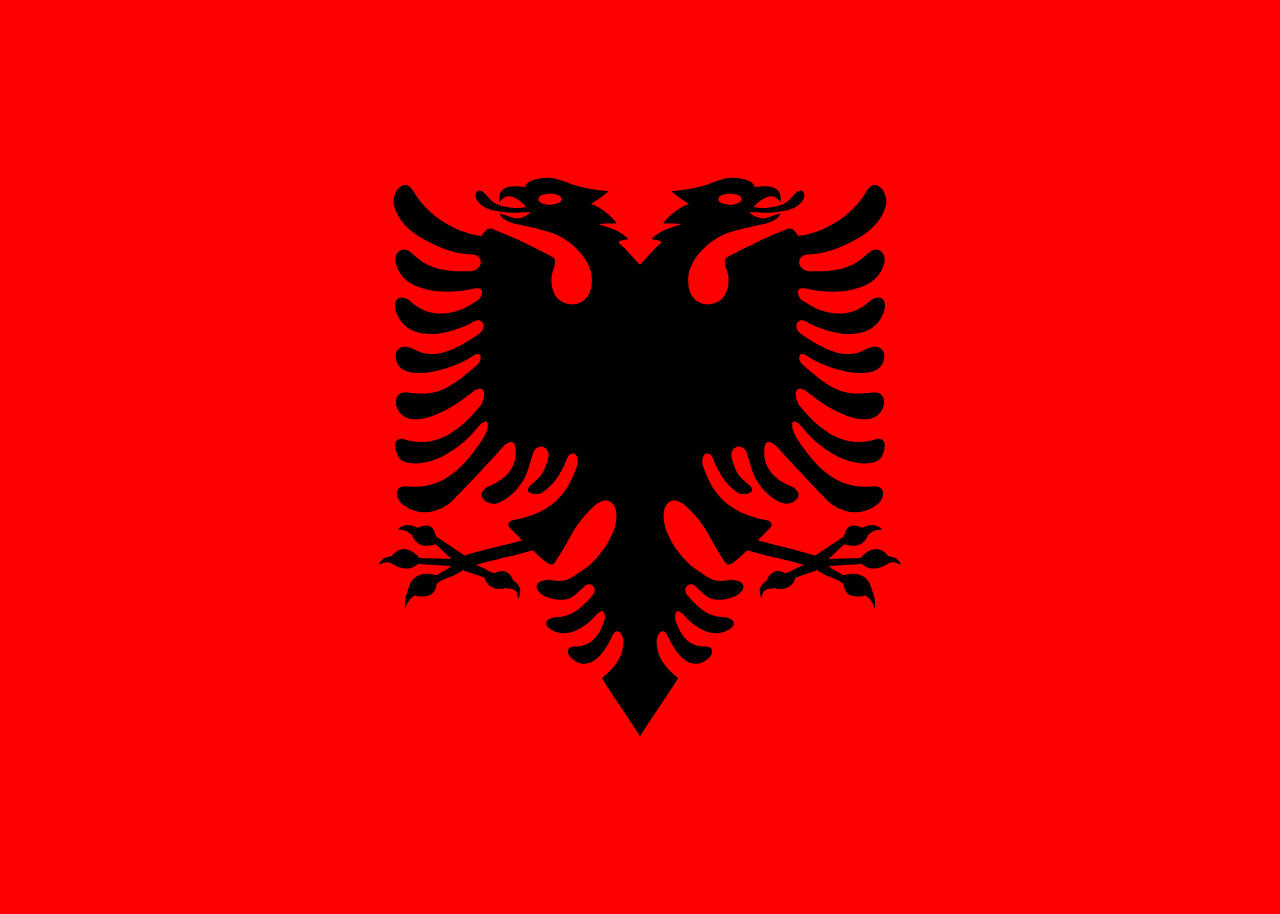
Albania
Europe
A red field with a black two-headed eagle, one of Europe's oldest heraldic symbols representing Albanian independence, strength, and the legacy of medieval hero Skanderbeg.
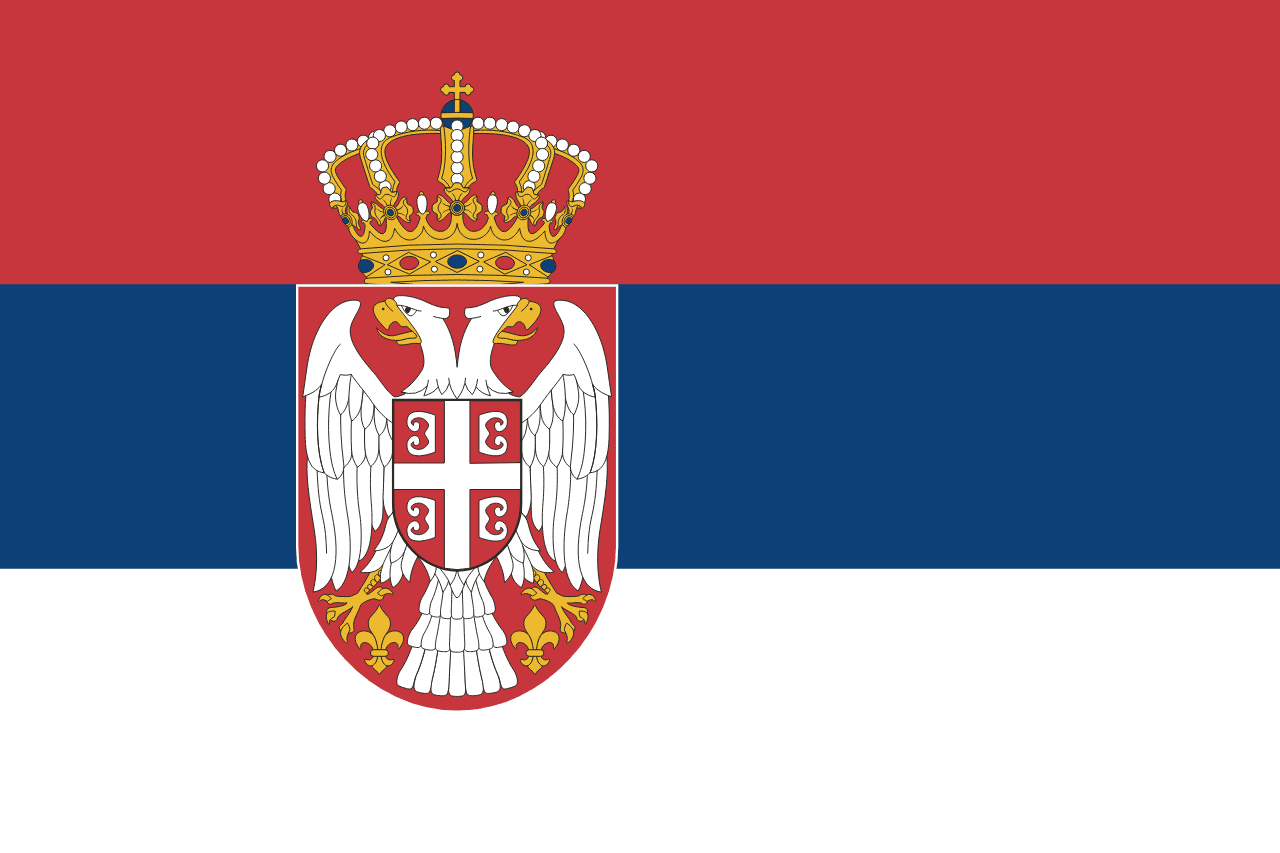
Serbia
Europe
A horizontal tricolor of red, blue, and white with the national coat of arms offset toward the hoist. The coat of arms features a double-headed white eagle, the Serbian cross, and a royal crown.
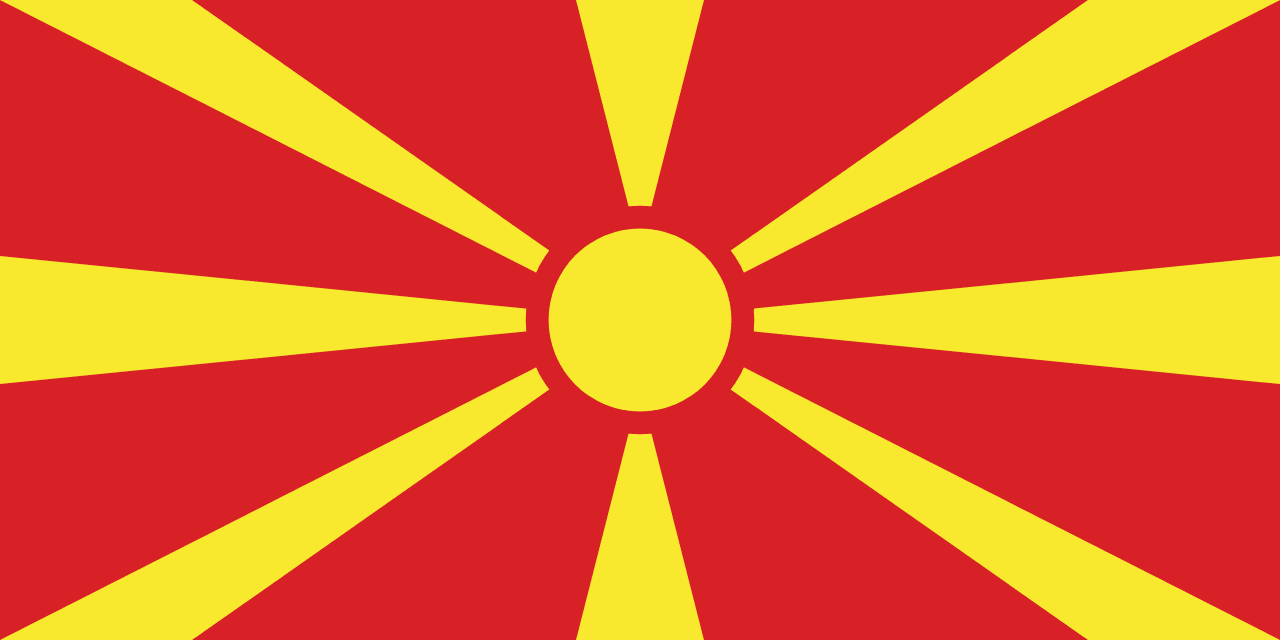
North Macedonia
Europe
A red field with a golden-yellow stylized sun with eight broad rays extending to the edges. Known as the 'Sun of Liberty,' it symbolizes freedom and the new nation’s identity.
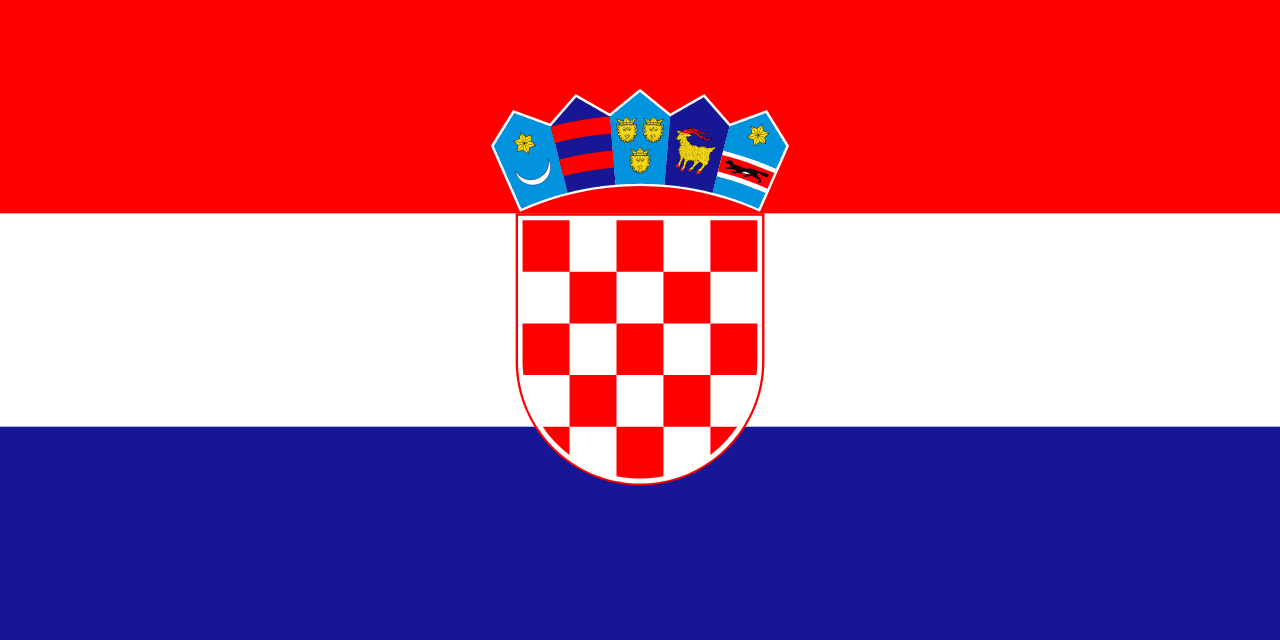
Croatia
Europe
Three horizontal stripes of red, white, and blue with the Croatian coat of arms centered on the white stripe, featuring the distinctive red and white checkerboard pattern and five historical shields representing the regions of Croatia.

Greece
Europe
Nine horizontal stripes alternating blue and white with a blue canton containing a white Greek cross, representing the sea and sky, purity and struggle for independence, and the Greek Orthodox faith that unites the nation.

Hungary
Europe
Three horizontal stripes of red, white, and green representing strength, faithfulness, and hope, with colors rooted in medieval Hungarian heraldry and the struggle for independence from foreign rule.